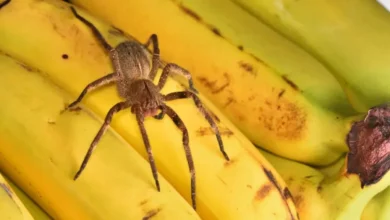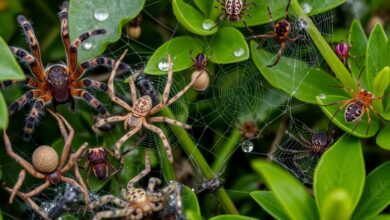Poisonous Spiders: What You Need to Know
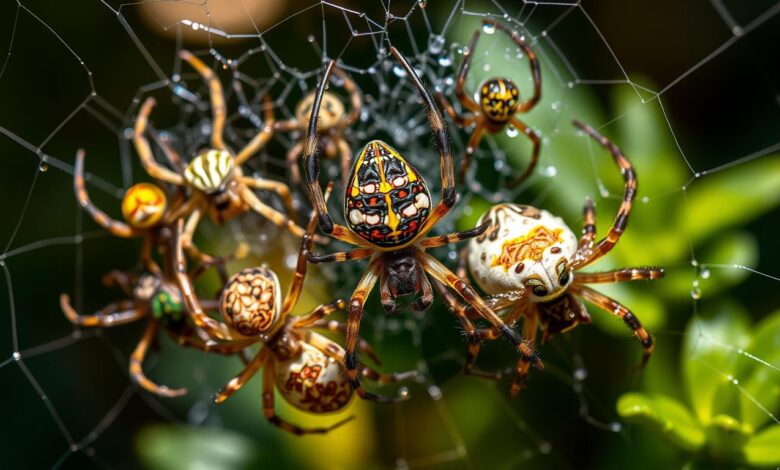
Venomous spiders are fascinating but can be dangerous. Their venom can harm humans if not treated. It’s important to know about different species and how to stay safe.
We’ll look at poisonous spiders, like the black widow and the brown recluse. You’ll learn how to spot spider bites and treat them. We’ll also talk about where these spiders live and why it’s key to be careful in those places.
Let’s explore the world of poisonous spiders together. This guide is for anyone who loves the outdoors, nature, or wants to keep their family safe. You’ll get the info and tips you need to handle venomous spiders wisely.
Identifying Venomous Spider Species
Knowing how to spot venomous spiders is key to staying safe. The black widow spider is one of the most dangerous. It has a shiny black body and a red hourglass mark on its belly.
The black widow’s venom can cause serious muscle pain and breathing problems. It can even be deadly if not treated right away. It’s important to know how to spot these spiders and take the right steps to avoid them.
Black Widow Spiders
Black widow spiders are common in North America. They like dark, quiet spots like woodpiles and shed corners. Female black widows are more venomous than males.
- Glossy black body with a distinctive red hourglass marking on the abdomen
- Potent neurotoxin venom that can cause severe symptoms
- Webs are often found in hidden, secluded areas
- Female black widows are more dangerous than males
Knowing what venomous spiders like black widows look like can keep you safe. Always keep your distance from spiders. If you think you’ve been bitten, get help right away.
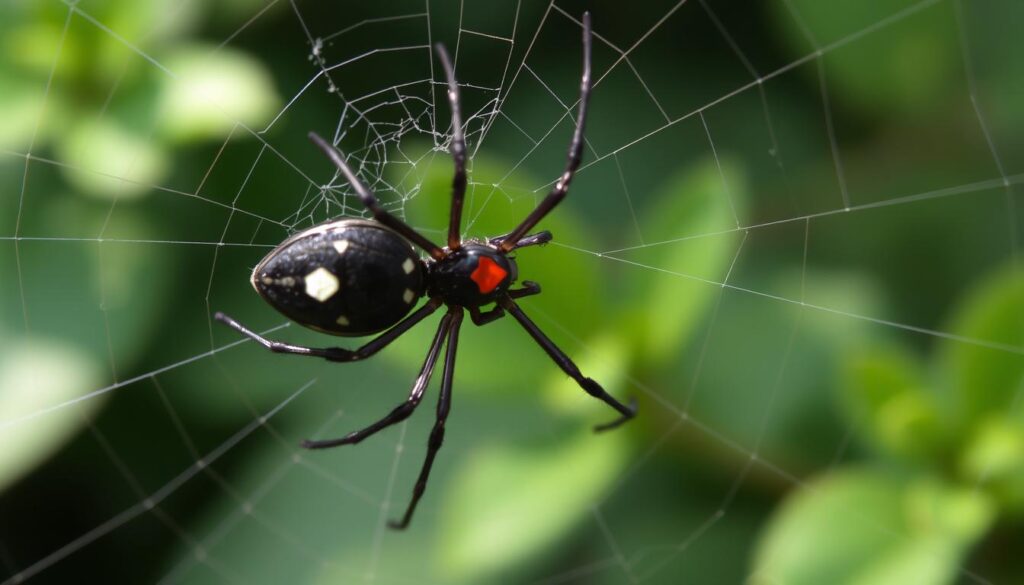
Signs and Symptoms of Spider Bites
Meeting a venomous spider can be scary. Knowing the signs and symptoms of a spider bite is key. A bite can cause anything from mild pain to serious health issues. Spotting these spider bite symptoms helps you get medical help fast.
Pain and swelling at the bite spot are common spider bite signs. The area might turn red and swell, showing your body’s reaction to the venom. Severe cases can lead to nausea, vomiting, and muscle spasms as the spider bite reactions worsen.
| Common Spider Bite Symptoms | Severe Spider Bite Symptoms |
|---|---|
|
|
The severity of spider bite symptoms depends on the spider and your body’s reaction. Getting medical help quickly is vital. Knowing the signs helps you act fast to stay safe.
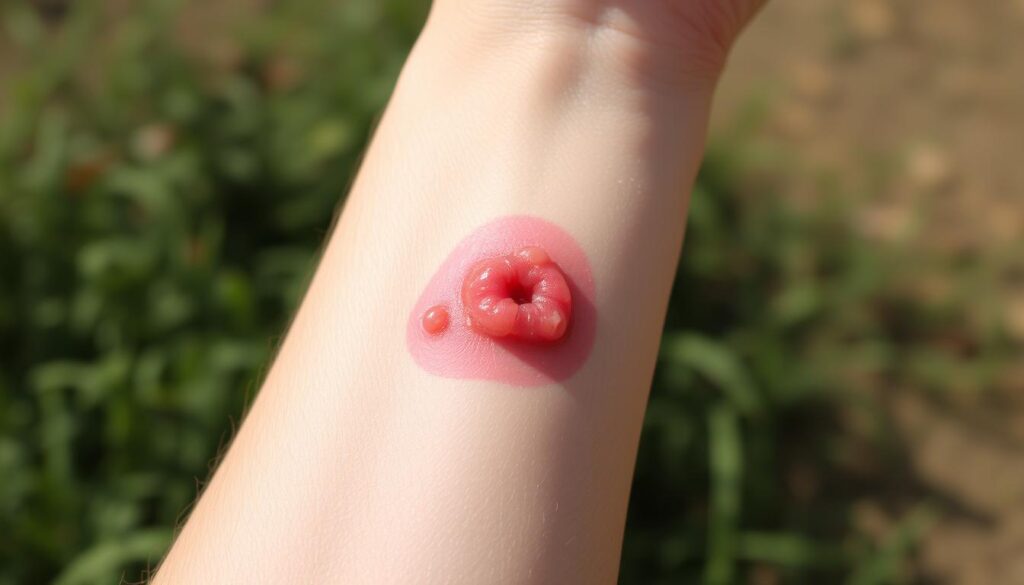
Poisonous Spiders and Their Habitats
Venomous spiders live in many places, from your home’s dark spots to the desert. The recluse spider likes quiet spots like woodpiles, closets, and basements. They build complex silk nests that can hold many spiders, raising the chance of running into them.
Recluse Spiders and Their Nests
Recluse spiders are known for their violin marks and love to hide. They make their homes in dark, messy places, like under furniture. These nests are key spots for many spiders, so it’s important to be careful around them.
Black Widow Spider (Latrodectus): Bite, Symptoms, and Facts| Spider Habitat | Preferred Environments |
|---|---|
| Recluse Spiders |
|
| Other Venomous Spiders |
|
Knowing where poisonous spiders like to live helps you avoid them. By understanding their habits, you can spot and fix spider-friendly spots in your home.
Treatment for Spider Bites
If you’re unfortunate enough to be bitten by a spider, immediate first aid and medical treatment are crucial. The first step is to clean the affected area thoroughly with soap and water. This helps reduce the risk of infection and remove any venom that may be on the skin’s surface.
Once the bite is cleaned, you should seek medical attention as soon as possible. Healthcare professionals may administer antivenoms, pain relievers, or other supportive measures. These are to alleviate symptoms and prevent serious complications.
For spider bite treatment, it’s important to act quickly. Certain spider bites, like those from black widows or recluse spiders, can be dangerous. Delaying treatment could lead to serious health issues. So, don’t hesitate to call emergency services or visit a doctor if you suspect a venomous spider bite.
In addition to seeking medical care, there are some first aid steps you can take at home. These include:
- Applying a cold compress to the affected area to reduce swelling and pain
- Taking over-the-counter pain medication to alleviate discomfort
- Avoiding scratching or rubbing the bite, as this could worsen the reaction
Remember, while most spider bites are relatively harmless, it’s always better to err on the side of caution when it comes to your spider bite medical care. Seeking prompt and proper treatment can make a significant difference in the outcome of a potentially dangerous spider bite.
| Type of Spider | Typical Symptoms | First Aid Recommendations | Medical Treatment Needed |
|---|---|---|---|
| Black Widow | Severe pain, muscle cramps, nausea, vomiting, abdominal pain | Clean the bite, apply cold compress, take pain medication | Antivenom, muscle relaxants, IV fluids |
| Brown Recluse | Mild to severe pain, redness, blisters, tissue damage | Clean the bite, apply cold compress, avoid scratching | Antihistamines, corticosteroids, antibiotics |
| Tarantula | Mild pain, swelling, redness | Clean the bite, apply cold compress | Usually no medical treatment required |
Preventing Spider Encounters
Being alert and taking steps ahead can lower the chance of meeting poisonous spiders. By using spider-proofing and spider-safe practices, you can make your space safer for everyone.
Sealing any cracks, crevices, and openings in your home is key. Spiders like these spots, so closing them off keeps them out. Also, keeping your space clean and clutter-free makes it harder for spiders to hide.
When you’re in places where poisonous spiders might be, like garages or sheds, wear protective clothes. This means long sleeves, gloves, and closed-toe shoes. It helps you avoid spiders and prevents bites.
Also, be careful when handling items that might have spiders, like firewood or boxes. Shake them out well before bringing them inside. This way, you make sure no spiders come in with them.
By following these spider-proofing and spider-safe practices, you can greatly reduce the risk of encountering and being bitten by poisonous spiders. Stay alert, stay safe, and enjoy a spider-free home.
Myth-busting Common Misconceptions
Many myths and misconceptions surround poisonous spiders, causing unnecessary fear and misinformation. It’s crucial to know the truth about these arachnids.
Separating Fact from Fiction
One common myth is that all spiders are venomous. But, only a few spider species have venom that can harm humans. Most spider bites are harmless and cause little to no symptoms.
Another myth is that spider bites are always painful and noticeable right away. Actually, many spider bites are not felt at first. Symptoms may show up hours or days later, depending on the spider and how the person reacts.
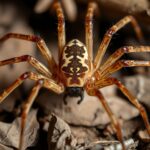 Recluse Spider: Facts and Safety Tips for You
Recluse Spider: Facts and Safety Tips for You
- Not all spiders are venomous, and most spider bites are harmless to humans.
- Spider bites are not always painful or immediately noticeable.
- Contrary to popular belief, spiders do not actively seek out humans to bite them.
One of the most lasting spider myths is that they are aggressive and attack humans without reason. But, spiders are actually shy and try to avoid humans. They only bite when they feel threatened or are accidentally touched or trapped.
By learning the facts about spiders, we can debunk common spider misconceptions. This helps us see these fascinating creatures in a more informed and balanced way.
Geographical Distribution of Poisonous Spiders
The world is full of different spider species, some of which are venomous. Knowing where these poisonous spiders live is key for travelers and locals. It helps them stay safe from these spiders.
The black widow spider is well-known and lives in North America. You can find them in the U.S., Canada, and Mexico. The redback spider is mostly in Australia.
Some spider species stick to one area, while others roam the world. For example, the brown recluse spider is common in the U.S. and parts of Canada, Mexico, and Central America.
| Poisonous Spider Species | Primary Geographical Regions |
|---|---|
| Black Widow Spider | North America (United States, Canada, Mexico) |
| Redback Spider | Australia |
| Brown Recluse Spider | Central and Southeastern United States, Canada, Mexico, Central America |
Knowing where these spider species live helps you stay safe. By learning where poisonous spiders are common, you can avoid them. This way, you can reduce the risks of their venom.
The Venom of Poisonous Spiders
Composition and Effects
Spider venom is made up of many compounds, like neurotoxins and hemotoxins. These can cause serious harm to humans. The venom’s strength and what it does can change with each spider type. It can cause pain, swelling, or even damage to organs.
The Joro spider, found in the U.S. since 2014, is spreading fast. It’s big, with bright yellow and black colors, and a red dot. Its venom is not very strong, but it’s still important to be careful around them.
| Spider Venom Composition | Potential Effects |
|---|---|
| Neurotoxins | Paralysis, respiratory distress |
| Hemotoxins | Damage to blood vessels, internal bleeding |
| Cytotoxins | Tissue damage, organ failure |
It’s key to know how spider venom works and its dangers. If bitten, get help right away. Knowing about spider venom helps us stay safe and know how to react if needed.
History and Folklore
Spiders have always fascinated humans. Their complex webs and mysterious ways have inspired many spider history, spider folklore, and spider mythology. Stories about spiders can be found in many cultures, showing their deep symbolic meaning.
In ancient Greece, the legend of Arachne is famous. She was a weaver who challenged Athena and became the first spider. In many Native American traditions, spiders are seen as tricksters and creators. Their webs symbolize the connection between all things.
- In some cultures, spiders are symbols of patience, creativity, and life’s cycle. They spin and rebuild their webs continuously.
- But in other beliefs, spiders are linked to darkness, deception, and the underworld. This shows the complex nature of spiders.
Spiders’ stories are fascinating worldwide. They show our ongoing interest in these amazing creatures. This interest highlights the power of spider history, spider folklore, and spider mythology.
Poisonous Spiders in Pop Culture
Spiders have caught our attention in pop culture, despite their dangers. Movies and TV shows have made them stars, often taking creative liberties. This has made us both fascinated and a little scared.
In spider-themed media, you’ll see many different views. From Spider-Man to giant tarantulas, these stories have captivated us for years. They show both the good and the bad sides of spiders.
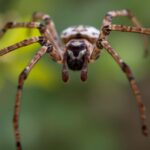 How many legs do spiders have?
How many legs do spiders have?
Even though pop culture doesn’t always show spiders accurately, it has made us more aware of them. Spiders have become a big part of our imagination. They remind us of the beauty and danger of the spider world.

